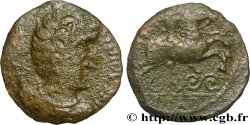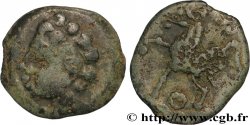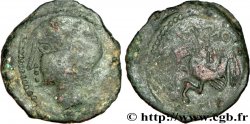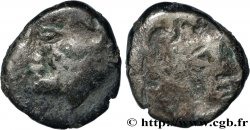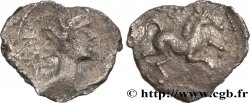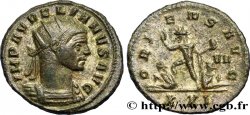v57_0402 - GALLIA - ARVERNI (Area of Clermont-Ferrand) Empreinte en plomb d’un revers de statère à l’esse et à l’amphore
MONNAIES 57 (2013)
Starting price : 750.00 €
Estimate : 1 500.00 €
unsold lot
Starting price : 750.00 €
Estimate : 1 500.00 €
unsold lot
Type : Empreinte en plomb d’un revers de statère à l’esse et à l’amphore
Date: c. 120-60 AC.
Metal : lead
Diameter : 18,5 mm
Weight : 4,47 g.
Rarity : R3
Coments on the condition:
Très intéressante empreinte présentant le type de revers complet, sur une lame de plomb, vraisemblablement découpée au burin. Infime défaut de métal au-dessus du cheval. Revers lisse avec de petits coups anciens. Agréable patine de plomb, brun clair et bien lisse
Catalogue references :
Obverse
Obverse legend : ANÉPIGRAPHE.
Obverse description : Type incus d’un cheval bondissant à gauche ; une esse au-dessus de la croupe ; amphore sous le poitrail.
Reverse
Reverse description : Lisse.
Commentary
Ce type à l’esse et à l’amphore correspond à plusieurs séries ; anépigraphe, CAS et VERCINGETORIX !
Ces lames de plomb portant une empreinte en creux ont été confectionnées à partir de monnaies en circulation. Pour notre exemplaire, un statère d’or a été pressé sur une lame de plomb jusqu’à en donner l’empreinte complète et vigoureuse, en creux. Il est intéressant de noter que cette empreinte est complète, avec tout le grènetis, ce qui exige le recours à un statère complet alors même que ces derniers sont souvent décentrés...
Ces rares vestiges (dont on connaît des exemples à l’époque romaine dans le cadre d’ateliers de faux-monnayauer) auraient pu servir de modèle à un graveur de coins (que ceux-ci soient réguliers ou irréguliers...).
Curieusement, les statères arvernes fourrés semblent très rares, ces monnaies auraient-elles été moins contrefaites que d’autres séries pourtant contemporaines ?.
Ces lames de plomb portant une empreinte en creux ont été confectionnées à partir de monnaies en circulation. Pour notre exemplaire, un statère d’or a été pressé sur une lame de plomb jusqu’à en donner l’empreinte complète et vigoureuse, en creux. Il est intéressant de noter que cette empreinte est complète, avec tout le grènetis, ce qui exige le recours à un statère complet alors même que ces derniers sont souvent décentrés...
Ces rares vestiges (dont on connaît des exemples à l’époque romaine dans le cadre d’ateliers de faux-monnayauer) auraient pu servir de modèle à un graveur de coins (que ceux-ci soient réguliers ou irréguliers...).
Curieusement, les statères arvernes fourrés semblent très rares, ces monnaies auraient-elles été moins contrefaites que d’autres séries pourtant contemporaines ?.








 Report a mistake
Report a mistake Print the page
Print the page Share my selection
Share my selection Ask a question
Ask a question Consign / sell
Consign / sell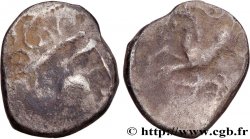
 Full data
Full data